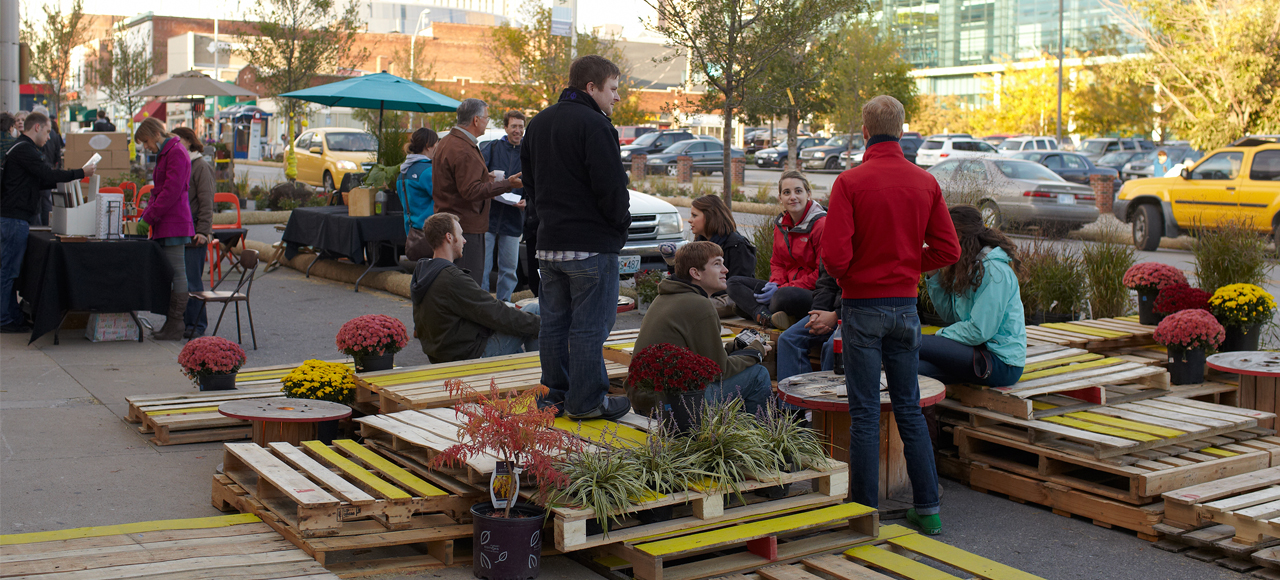
New design movement boosts civic life
Suzanne Nienaber is partnerships director at the Center for Active Design. Photo courtesy of Center for Active Design.
Across the U.S. our communities are facing disturbing trends related to civic engagement, from low voter turnout to growing social and economic divides. Civic leaders and community residents alike are interested in rebuilding trust, revitalizing neighborhoods and supporting interaction among diverse groups. Meanwhile, promising innovations are emerging across the country. Citizen-led initiatives such as Better Block and Walk Your City are bolstering vibrant street life. Many city leaders and public-private partnerships are working to transform underused infrastructure into dynamic public spaces. Researchers are uncovering new connections between neighborhood design and levels of civic trust.

In light of these significant trends, the Center for Active Design (CfAD) is launching “Assembly: Shaping Space for Civic Life,” a pioneering initiative to leverage place-based design as a tool to enhance civic engagement. Assembly incorporates research as well as practitioner input to develop a set of practical, cost-effective design guidelines to support civic life. With support from Knight Foundation, Assembly also benefits from the guidance of a diverse, multidisciplinary advisory committee.
This summer, we are releasing the Assembly Project Orientation to create a common vocabulary and serve as a resource for partners involved in developing the guidelines. The Project Orientation is available for free download. According to Joanna Frank, our executive director, “This publication will be used to recruit potential collaborators, spark dialogue, and identify real-world projects to illustrate the upcoming design guidelines, which are scheduled for publication in 2018.”
Assembly seeks to advance four civic engagement objectives: 1) civic trust and appreciation; 2) participation in public life; 3) stewardship of public spaces; and 4) informed local voting. It also outlines design qualities that capture the spirit of public space—such as prioritizing safety, comfort and convenience; embracing unique community context; and inspiring interaction.
The Project Orientation illuminates early findings that have emerged from a detailed literature review and preliminary data analysis. For example:
· People living in neighborhoods with parks are more likely to report a sense of civic trust and willingness to help others.
· Walkable, mixed-use neighborhoods are associated with greater participation in public life.
· Individuals may be more conscientious stewards of their communities when public spaces are well maintained.
· Community aesthetics and beauty impact trust in local leaders, as well as people’s sense of being able to make a difference in their community (which is connected to political participation rates).
The document also highlights critical research gaps to explore. For example, how does the siting and design of public buildings impact civic engagement? How can technology and messaging be harnessed within the public realm to support civic dialogue? The Center for Active Design will apply original research methods as well as guidance from experts to investigate key questions. We will publish interim reports to share emerging findings as our research unfolds.
Ultimately, Assembly seeks to build a broad movement around design and civic life that will inspire a wide range of professionals and community advocates – from city officials and policymakers, to architects, planners, developers, researchers and organizers. By defining clear metrics for evaluating civic engagement outcomes, Assembly will also help communities set clear goals, capture success stories, and benchmark their progress as they leverage place-based design to support civic life.
To receive updates on Assembly, join the Center for Active Design mailing list at centerforactivedesign.org/subscribe.
Recent Content
-
Community Impactarticle ·
-
Community Impactarticle ·
-
Community Impactarticle ·


